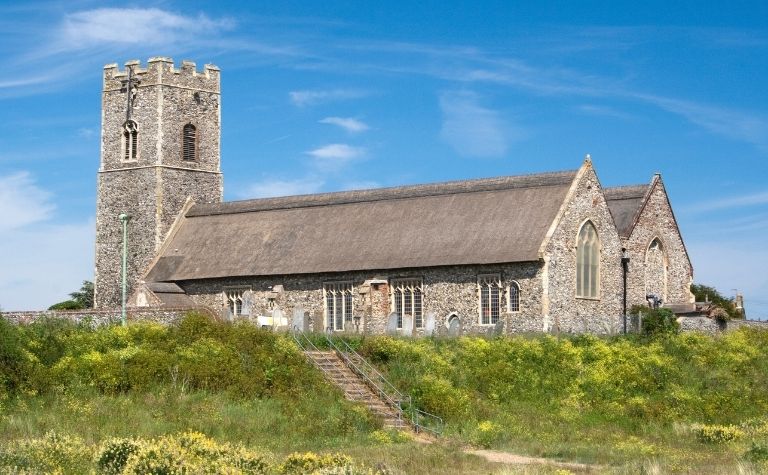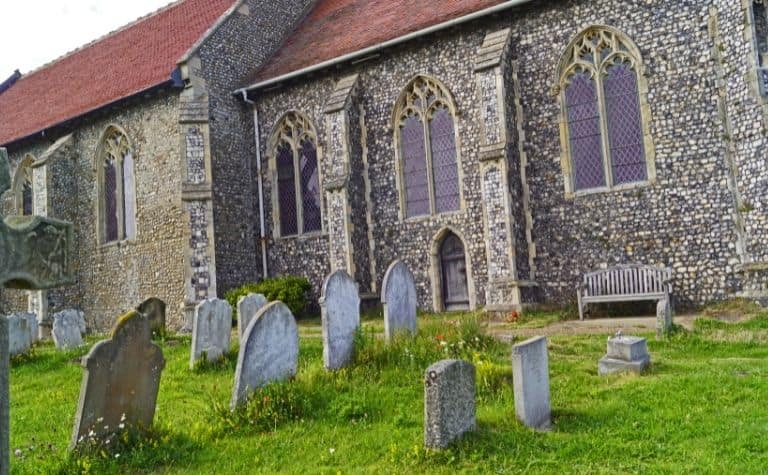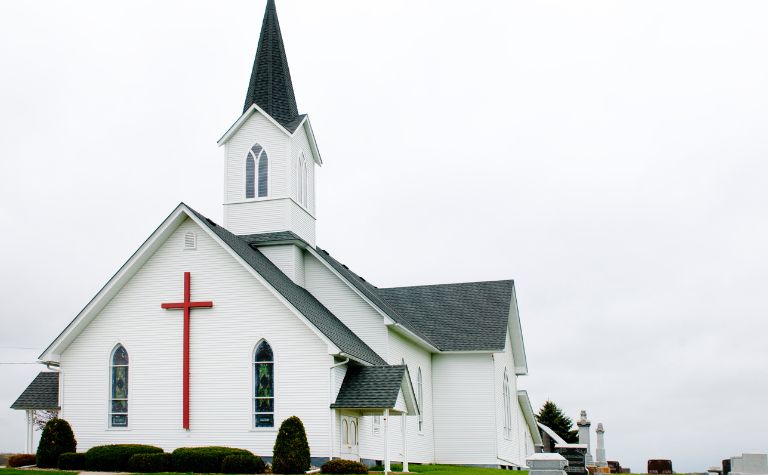Protestantism and Anglicanism are branches of the Christian faith that have roots in Europe. Protestantism and Anglicanism have similarities and differences with each other as well as other historical branches of Christianity like Roman Catholicism.
Protestantism emphasizes the authority of Scripture and that sinners are saved by God’s grace, through faith, and in Jesus Christ alone. Anglicanism, which is sometimes referred to as a middle way between Protestantism and Catholicism, emphasizes celebrating the incarnation of Christ, prayer, liturgy, and the sacraments.
What do the terms “Protestant” and “Anglican” refer to, and how did each movement originate? Who are the significant early influencers of each tradition? How do Protestant and Anglican beliefs about God, Jesus Christ, the Bible, the Church, and the Holy Spirit compare with each other? Keep reading to learn more.
Also, see Protestant vs. Catholic vs. Orthodox: What’s the Difference? to learn more.

Protestantism and Anglicanism: Similarities and Differences
The terms “Anglican” and “Church of England” are often used synonymously. The tradition refers to itself as a “communion” rather than a denomination to express the global unity of churches within Anglicanism. (Also, see Protestantism vs. Pentecostalism: What’s the Difference?)
The head of the Anglican church is called The Archbishop of Canterbury. The tradition experienced a transformation at the time of the Protestant Reformation.
| Protestantism | Anglicanism | |
|---|---|---|
| Origin | 16th-century Europe, especially Germany, under the reforms of Martin Luther (1483-1546). Reform movements took root throughout Europe in different countries at this time. | Christianity in England dates to the first few centuries after Christ. However, the Church of England declared independence from the Roman Catholic Church under King Henry VIII (1491-1547) in the Act of Supremacy (1534). |
| Meaning of the name | The word “Protestant” comes from the Latin word protestari, meaning “to bear witness.” The reformers were “protesting” certain doctrines and practices of the Catholic church. | The term “Anglican” comes from the Latin word Anglicanus, meaning England. Its first use was in the 13th-century Magna Carta (1215), which reads, “the Anglican church shall be free.” |
| Early influencer | Martin Luther, John Calvin of France (1509-1564), and Ulrich Zwingli of Switzerland (1484-1531) | Queen Elizabeth I (1533-1603), King Edward IV (1537-1553), Thomas Cranmer (1489-1556), King Edward VI (1537-1553) |
| Significant writing outside the Bible | The Apostles Creed, the Nicene Creed; the writings and sermons of Martin Luther, especially the 95 Theses, Calvin’s The Institutes of the Christians Religion; many others | The Apostles Creed, the Nicene Creed; The Book of Common Prayer (1549); The 39 Articles of Religion (1571), which are included in The Book of Common Prayer |
| Theology | Protestantism believes that Scripture alone, not ecclesiastical tradition, is authoritative for Christians and the church. It also emphasizes that sinners are saved by grace, through faith, and in Christ alone. | Some describe Anglicanism as Protestant; others describe it as a middle way between Catholicism and Anglicanism. Still, others describe it as a middle way between Presbyterianism and Lutheranism. The Trinity, the fallenness of humanity, the incarnation, the death and resurrection of Christ, and the Second Coming are all core beliefs of the tradition. |
| Theological and Social worldview | Protestants may be liberal or conservative theologically or socially. Many mainline denominations, especially in North America, have embraced liberal ideology in recent years. | It depends on the communion; for example, churches in the Anglican Communion in America, Canada, Brazil, and other countries champion liberal social causes, and some have formalized their support of them. Other Anglican churches have resisted offering their support. |
Also, see Protestant vs. Eastern Orthodox: What’s the Difference?

Protestantism and Anglicanism: Similarities and Differences
Protestantism is a collection of historic denominations and churches like Lutheran, Presbyterian, Methodist, Assemblies of God, Baptist, and others, as well as many non-denominational churches. (Also, see Protestant vs. Methodist: What’s the Difference?)
Scripture shapes Protestant beliefs, and other creeds and books have also been important. Scripture also informs Anglicanism, as does The Book of Common Prayer and The Thirty-Nine Articles of Religion.
- The Book of Common Prayer: The historical convictions of the Anglican tradition are expressed in The Book of Common Prayer, first published during the reign of King Edward IV in 1549. Potential Anglican clergymen are measured according to the section called the Ordinal.
- The 39 Articles of Religion: This articulation of Anglican beliefs and practices originated in the 16th century. It affirms Anglican doctrine like the Trinity and refutes certain Catholic doctrines such as transubstantiation. It is often characterized as a middle road between Protestantism and Catholicism.

| Protestantism | Anglicanism | |
|---|---|---|
| Scripture | One of the hallmarks of the Protestant tradition is the authority of Scripture over and above church tradition. Protestants historically believe in the inspiration and authority of Scripture. | The Bible is inspired according to traditional Anglican teaching. The Apocrypha or Deuterocanonical Books found in Catholic Bibles may not shape Anglican doctrine. |
| God | Protestants believe in the Trinity, one God who exists in three persons. The Father, Son, and Holy Spirit are each fully divine. | Anglicans believe in the Trinity. They emphasize the incarnation of Christ, the second person of the Trinity. |
| Christ | Jesus is the second person of the Trinity. He is God in human flesh. He is 100% God and 100% man. Jesus was born of a virgin, lived a sinless life, died as an atonement for sin, and was physically resurrection on the third day. | Anglicanism affirms the nature, person, and work of Christ, including his sinlessness, atoning death, and physical resurrection, as does the wider Protestant tradition. |
| Salvation | Protestants believe that salvation is by grace through faith in Christ alone. Protestants can be Arminian, Calvinist, Baptist, or something else. | Early Anglicanism experienced tension between Arminian and Reformed or Calvinist perspectives. Some early versions of The 39 Articles of Religion reflected Calvinistic ideas, yet Arminian influences were ultimately victorious in shaping the tradition. |
| Baptism | Generally, Protestants believe baptism identifies a person with the death and resurrection of Christ (Rom. 6:3-5) and obedience to Christ. It also signifies their inclusion into the church community (Acts 2:38-47). Protestants do not agree about who (children or adults) should be baptized and how (sprinkling or immersion). | Anglicans baptize infants for the purpose of regeneration, church membership, and the forgiveness of sins. |
| Communion | Generally, Protestants believe the Lord’s Supper is a continual practice that Christ started before his death and resurrection. Protestants don’t agree about the nature of the bread and cup. | Anglicans reject transubstantiation and the memorial view of the bread and cup. Instead, people receive the elements of the body and blood of Christ through faith. |
| Holy Spirit | The Holy Spirit is the third person of the Trinity. He is fully divine. The Spirit applies the salvation that the Father planned and that the Son earned for sinners. He bestows spiritual gifts on believers that they are to use for the edification of the Church. | Anglicans agree with the wider Protestant tradition that the Holy Spirit is the third person of the Trinity and is fully God. |
| Church | A key tenet of Protestantism is that the Church is comprised of people who Christ has saved from sin. Protestant churches often have an episcopal, presbyterian, or congregational form of church government. | Anglicanism employs an episcopal form of church government. The Archbishop of Canterbury presides over the Anglican communion. Bishops lead Anglican churches. Archbishops oversee national and regional bodies of local churches.* |
| The Return of Christ | Protestants believe in the Second Coming of Christ, which is a core belief in the tradition. Protestant traditions may be Amillennial, Premillennial, or Postmillennial. | The Second Coming of Christ is a primary doctrine; the millennium is understood according to Amillennial theology. |
Historically, the Anglican tradition has contained so-called “high churches” and “low churches,” which are defined according to the extent that the Catholic church has upon them. (Also, see Protestant vs. Puritan: What’s the Difference?)
- High church: The high church refers to Anglican bodies that emphasize liturgy and draws significantly from Roman Catholicism.
- Low church: Low churches in the Anglican communion do not draw from Catholic doctrines and traditions.
Please see the related articles below.
References:
[1] Source
[2] Source
[3] Source
Related Questions
Catholic vs. Protestant vs. Orthodox: What's the Difference?
Roman Catholicism, Protestant Christianity, and the Eastern Orthodox Church are the three historical branches of the Christian religion. Each tradition traces its doctrines and practices to the New...
Protestantism and Eastern Orthodoxy are two of the three historical branches of the Christian faith, along with Roman Catholicism. Though the Orthodox tradition is approximately 500 years older than...
